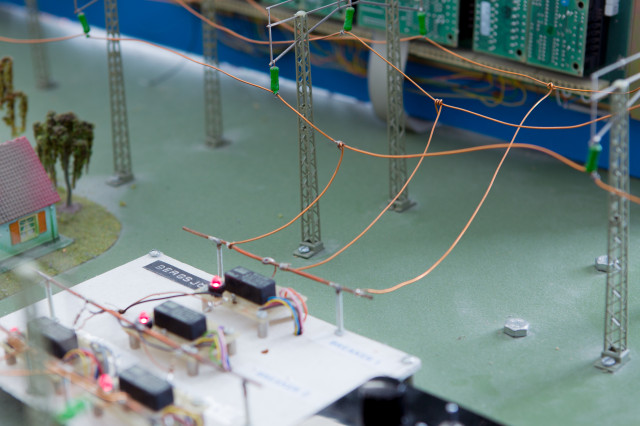Dielectric wave-guides: Attenuation, wavelength dispersion. Light sources: Semiconductor laser, light emitting diode, rate equations, output power, modulation, noise, laser amplifiers, chirp. Detectors: PIN diode, avalanche diode, responsivity, bandwidth, noise, Systems: Direct detection systems, heterodyne systems, attenuation limitations, dispersion limitations, signal dependent noise, additive noise, bit error rate, optical networks, solitones.
IO2653 Fiber-optical Communication 7.5 credits
This course has been discontinued.
Decision to discontinue this course:
No information inserted
Information per course offering
Course offerings are missing for current or upcoming semesters.
Course syllabus as PDF
Please note: all information from the Course syllabus is available on this page in an accessible format.
Course syllabus IO2653 (Autumn 2008–)Content and learning outcomes
Course contents
Intended learning outcomes
The course content is knowledge of fibre optical components, links, and systems. The system relevant parameters of devices are derived from a physical description, and these parameters form the basis for designing fibre optic links.
After a completed course the participants should be able to:
-Understand, describe, analyze, compare the most important devices: light sources, fibres and detectors from both physical and system point of view.
-Design digital fibre optic links and.
Literature and preparations
Specific prerequisites
Literature
Agrawal: ”Fiber-Optic Communication Systems”, third edition, Wiley 2002. Other course litterature includes collection of problems, old examinations and laboratory instructions
Examination and completion
Grading scale
Examination
- TEN1 - Examination, 6.0 credits, grading scale: A, B, C, D, E, FX, F
- LAB1 - Laboratory Course, 1.5 credits, grading scale: P, F
Based on recommendation from KTH’s coordinator for disabilities, the examiner will decide how to adapt an examination for students with documented disability.
The examiner may apply another examination format when re-examining individual students.
If the course is discontinued, students may request to be examined during the following two academic years.
Other requirements for final grade
One written examination (TEN1, 6 credits) and lab course (LAB1, 1.5 credit)
Examiner
Ethical approach
- All members of a group are responsible for the group's work.
- In any assessment, every student shall honestly disclose any help received and sources used.
- In an oral assessment, every student shall be able to present and answer questions about the entire assignment and solution.
Further information
Course room in Canvas
Offered by
Main field of study
Education cycle
Supplementary information
The course is replaced by SK2811 as from autumn term 2017.